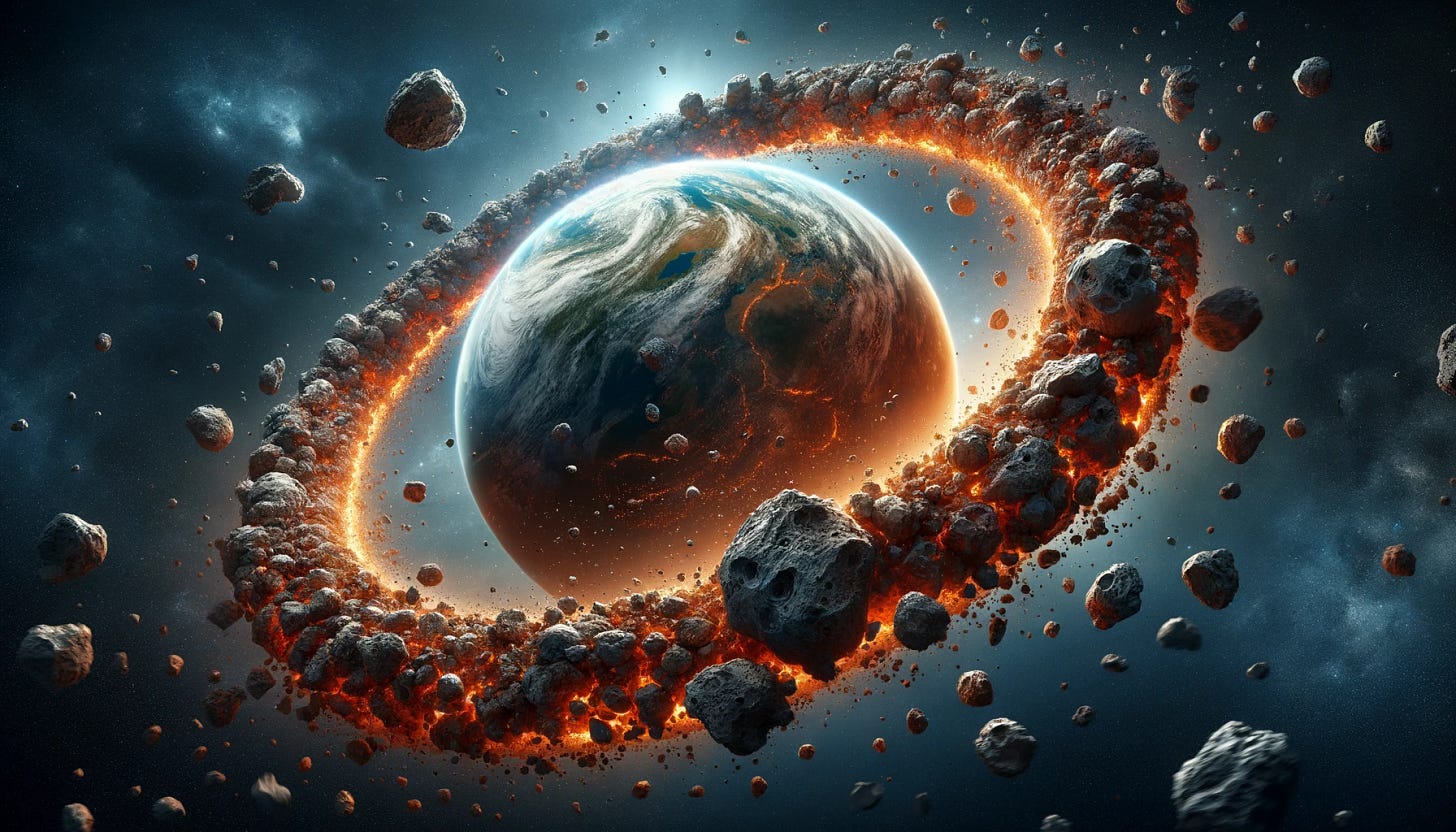Four and a half billion years ago, the little proto-Earth was minding its own business, orbiting the Sun, and living its best little Earth life. Young Earth was only 100 million years old, give or take, so it was very different than our planet today.
We need to invoke a little deep time in order to really appreciate this time scale. 100 million years is just 2% of the life of the Earth, so you could imagine the planet during this time as a toddler. Magma covered the entire surface, and the atmosphere was surely hellish: life had not yet transformed the air into what we breathe today.
Even though the Earth wasn’t habitable in the way we think of that term today, it’s conceivable that there was life in the form of extremophiles, even way back then, but we don’t have any evidence of this yet.
Suddenly (in cosmic terms), everything changed as a planet the size of Mars collided directly with our Earth. Today, planetary scientists have a name for this would-be destroyer of worlds: Theia.
All that magma covering the Earth’s surface was rocked by the enormous shockwave, and most of it came right off of the Earth, splattering into space. Theia had come in at an oblique angle, so this rocked the placid planet to its core, causing it to spin faster, and to tilt.
All of that splattered magma, along with chunks of the planet beneath, were thrust out and away from the planet. Much of this debris was momentarily vaporized—that’s how hot this impact was! The magma/debris spewage fell into Earth’s orbit, and it became something like Saturn’s rings.
Over thousands of years, this disc of rings slowly coalesced into a spherical shape. Eventually, it became our Moon.
Sure, the Moon gave us a light at night so we could hunt, but it ensured our survival in another important way: by stabilizing the Earth’s orbit. We have seasons, and it’s thanks to the Moon that they’re predictable and recurring.
When we look at rocks from the Moon, we’re struck by how similar they are to the Earth’s mantle. That’s all thanks to the splatter-merger 4.5 billion years ago. That merger is why the Earth’s composition is the way it is.
We can thank Theia for helping to create the necessary conditions for life, and we can thank her for helping to sustain that life over billions of years.






Sure, I guess our Moon is all essential and stuff, but don't those Saturn-like rings look way cooler?
Thanks for nothing, Moon!
Been watching multiple Naked Science episodes about our magnetic field, and the fact that Venus and Mars don't have them (at least not any more). We may owe that to Theia too -- Earth's iron core being a little bigger and spinning a little faster .